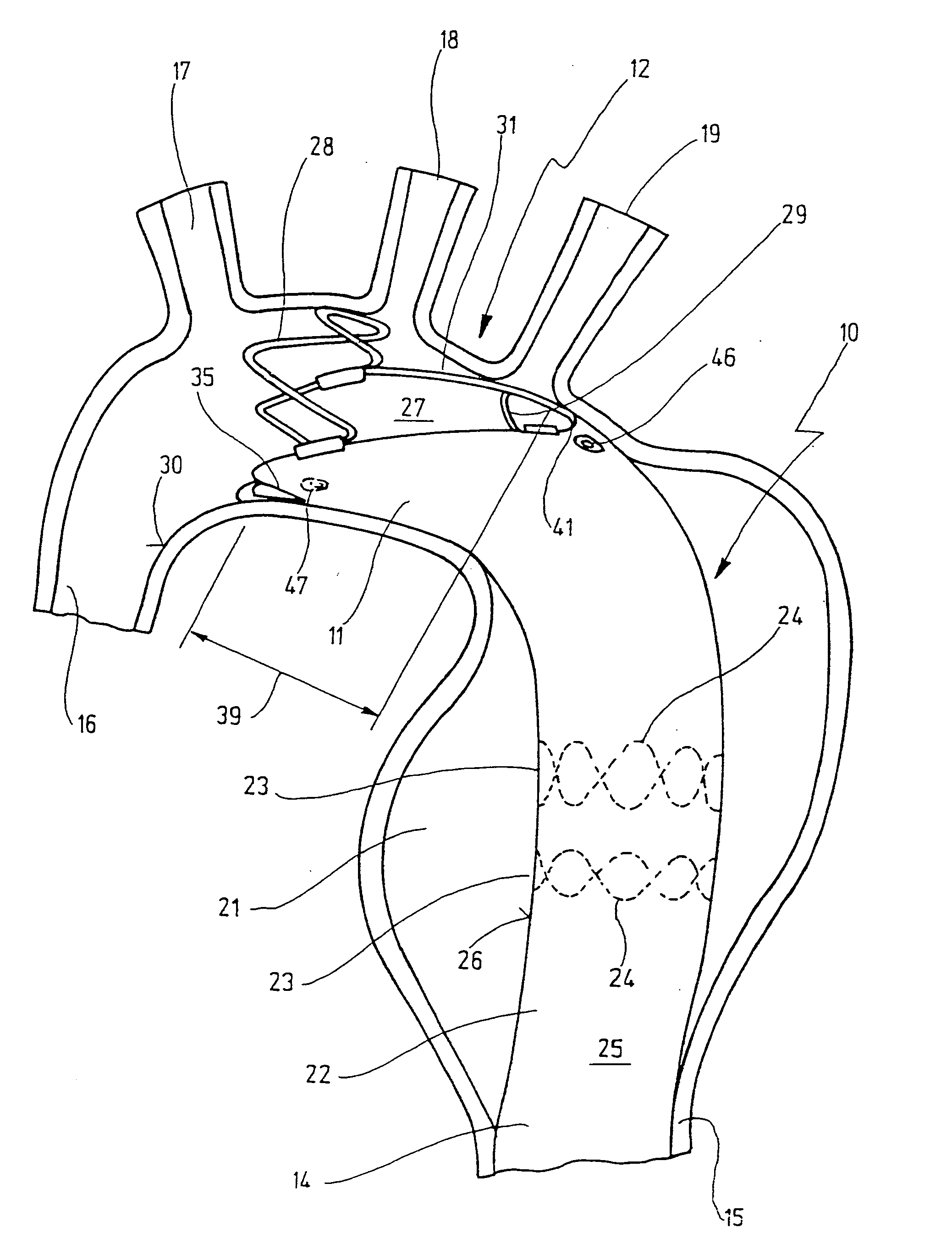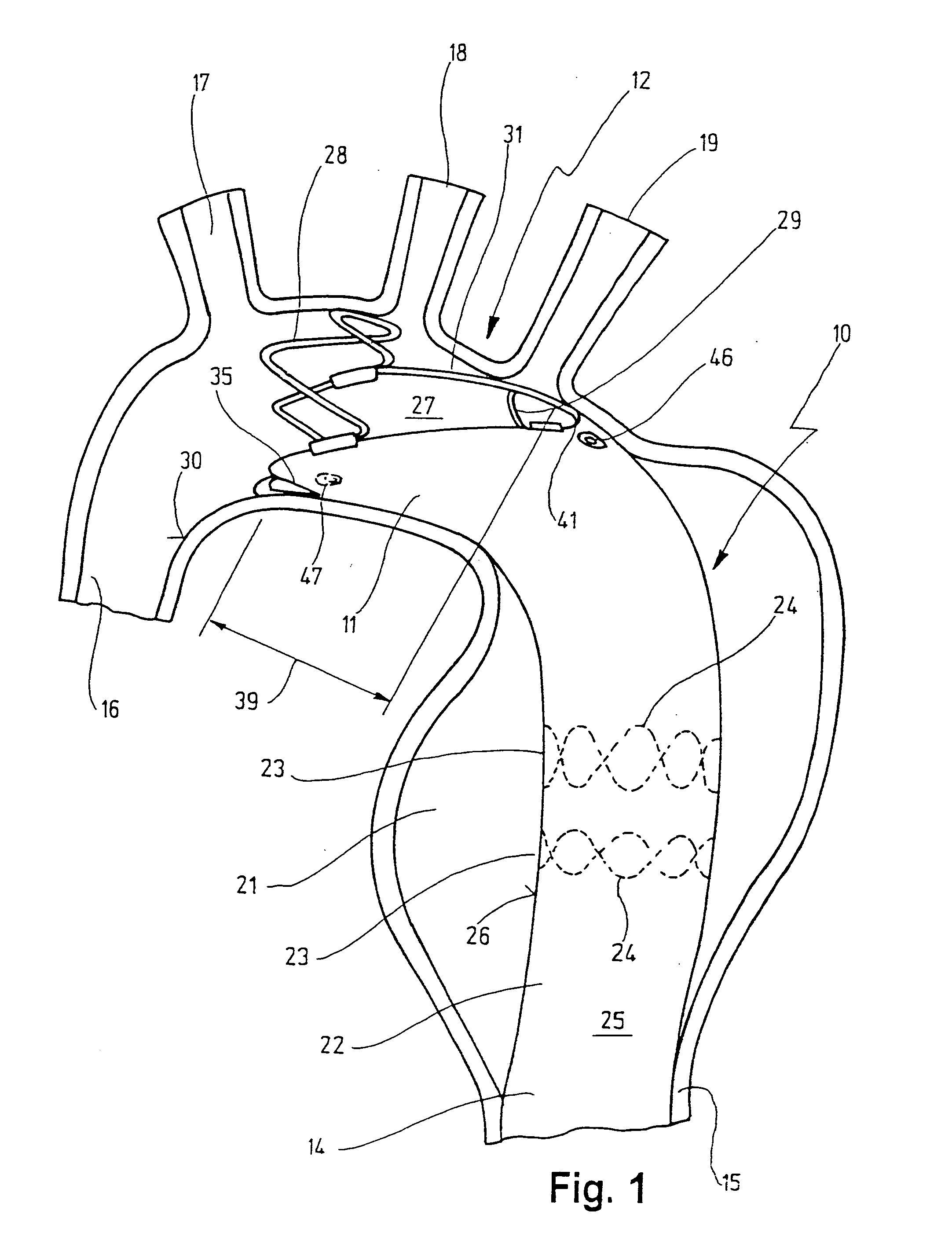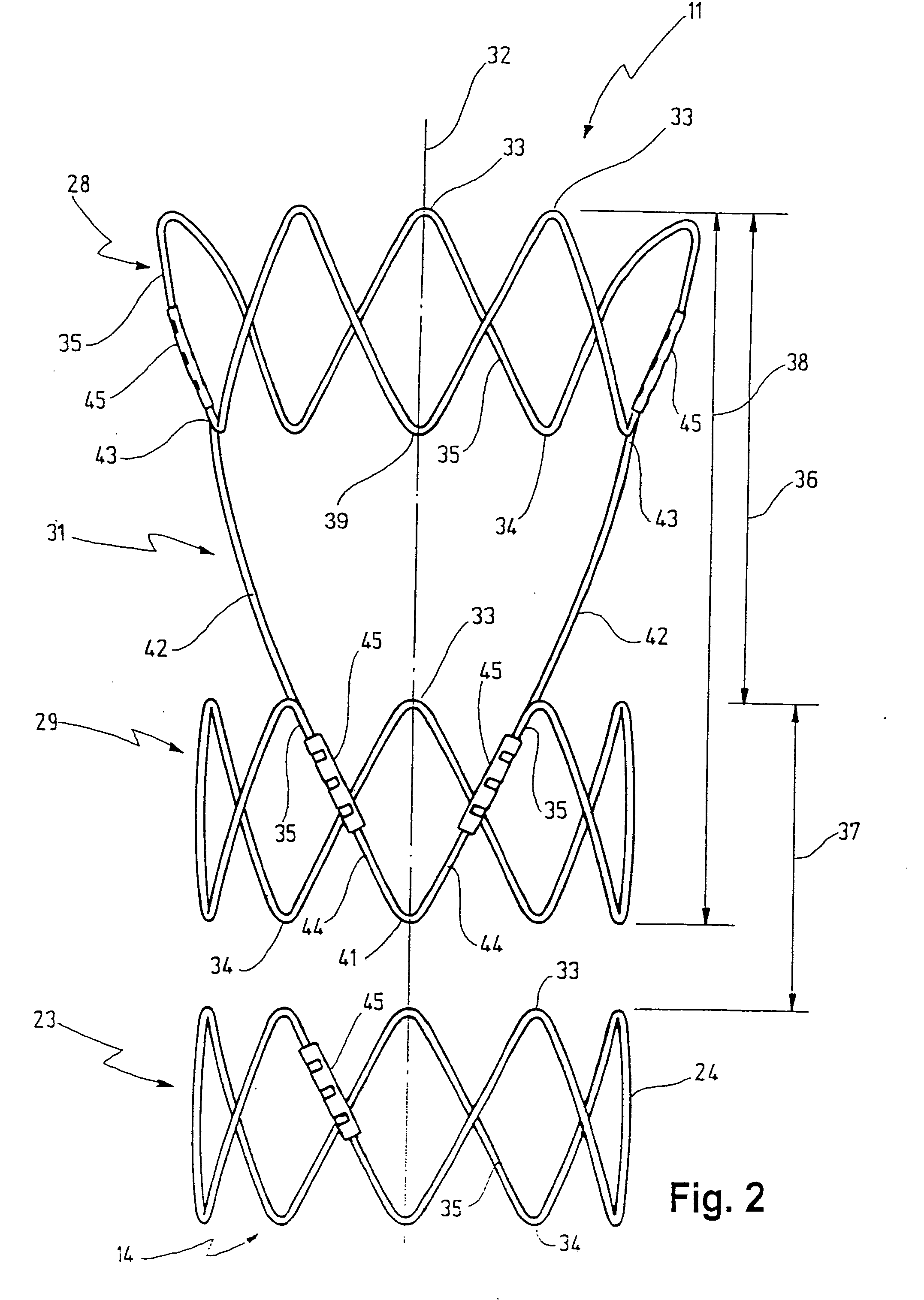Stent for implantation in a blood vessel, especially in the region of the aortic arch
a blood vessel and aortic arch technology, applied in the field of stents for implantation in blood vessels, can solve the problems of insufficient fixing and unsuitable treatment of mesh-type stents, and achieve the effect of improving the stability of the stent and enhancing the stability of the flank
- Summary
- Abstract
- Description
- Claims
- Application Information
AI Technical Summary
Benefits of technology
Problems solved by technology
Method used
Image
Examples
Embodiment Construction
[0065] In FIG. 1, reference number 10 designates a stent which is anchored with its proximal end 11 in the aortic arch 12 and with its distal end 14 in the descending aorta 15.
[0066] Before the stent 10 is described in detail, the aortic system also shown schematically in FIG. 1 will first be explained.
[0067] The ascending branch 16 of the aorta (aorta ascendens) is connected, via the aortic sinus (not shown in FIG. 1), to the left ventricle of the heart (also not shown in FIG. 1). The ascending aorta 16 is connected to the descending aorta 15 via the aortic arch 12. Arterial vessels of the head have their origin in the region of the aortic arch 12, namely the brachiocephalic trunk 17, the common carotid artery 18 and the left subclavian artery 19.
[0068] Reference number 21 designates an aneurysm located in the descending aorta 15 and bridged, as it were, by the stent 10. The blood flow from the ascending aorta 16 passes through the aortic arch 12 into the proximal end 11 of the ...
PUM
 Login to View More
Login to View More Abstract
Description
Claims
Application Information
 Login to View More
Login to View More - R&D
- Intellectual Property
- Life Sciences
- Materials
- Tech Scout
- Unparalleled Data Quality
- Higher Quality Content
- 60% Fewer Hallucinations
Browse by: Latest US Patents, China's latest patents, Technical Efficacy Thesaurus, Application Domain, Technology Topic, Popular Technical Reports.
© 2025 PatSnap. All rights reserved.Legal|Privacy policy|Modern Slavery Act Transparency Statement|Sitemap|About US| Contact US: help@patsnap.com



